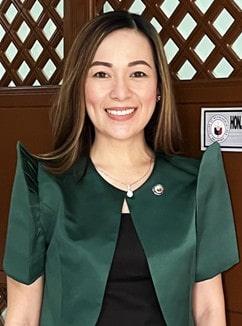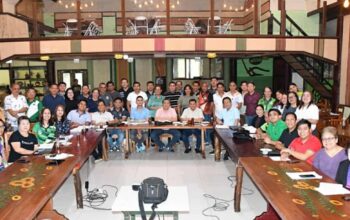
THE comments of the people who wanted to scrap the two-year senior high in the secondary curriculum in the country and those who favored it are varied.
This is the apparent result of Congw. Vanessa Cadorna Aumentado’s post in her facebook account, which reads in vernacular as follows: “Uyon ba mo ipadayon ang Senior High School under K to 12 Program or dili? Ngano? Just wanna know your thoughts on this. Tnx. (Are you in favor that senior high to continue. Why?)
What probably prompted the online survey is the news report said Senator Jinggoy Estrada is contemplating to file in the Senate the scrapping of the two-year senior high education.
One of the disadvantages of the K-12 curriculum is that it “increased the financial burden on Filipino families. Many parents struggled to cover the additional costs associated with two more years of schooling. This financial strain, coupled with the lack of perceived benefits, has led to widespread dissatisfaction with the program.”
“Go go K12. My personal opinion it works,” one comment said. And another said, “Big Yes…. para sayon na sa mga students hinag skol na sa college.”
One opinion said that it may be optional. “sa akoa lang para patas Optional nalang mo undergo og exam ang student kung makapasar pede na sila mo proceed sa college kung dili ka pasar moagi gyud sila og senior high.”
Those against its continuation, “Ga dako dako lang sa gasto sa ginikanan! unya ang ending ang istudyante dili kamao mobasa!”
Another said, “Dli Cong gawas sa dugang sa gasto ang mga bata uban kapoyan na hinoun mo skwela kay dugay kaayo mo graduate.”
“Cong. Van-van Cadorna Aumentado. Morag pwede ra tangtangon na d mana basis nga maka produce tag quality graduates. Mas nindot tali focusan ang ang pagpa daghan sa rooms og pagpanindot sa mga skwelahan og teachers ratio og ilahang Benipisyo, etc,” one said.
Here are some of the information of what is K-12? K stands for kindergarten and 12 refers to the succeeding 12 years of basic education, which is why it is called K to 12. The 12 years of basic education comprises of 6 years of elementary education, 4 years of junior high school, and 2 years of senior high school.
The basis is Republic Act No. 10533, the Enhanced Education Act of 2013, which seeks to improve the basic education system of the Philippines by strengthening its curriculum and lengthening the number of years of basic education from ten to twelve years. It was approved on May 15, 2013.
K to 12 (also K-12) is an education system under the Department of Education that aims to enhance learners’ basic skills, produce more competent citizens, and prepare graduates for lifelong learning and employment.
How does the K-12 program contribute to Philippine development? The K to 12 Program also aims to make the curriculum relevant to learners through contextualization and enhancements, build proficiency with Mother Tongue-Based Multilingual Education, ensure integrated and seamless learning through spiral progression, prepare students for the future, and nurture holistically developed. (rvo)


